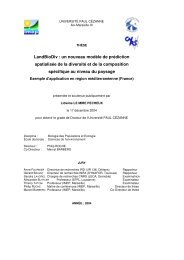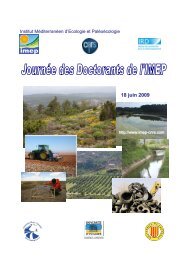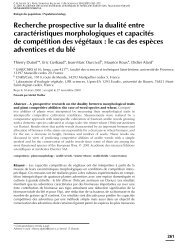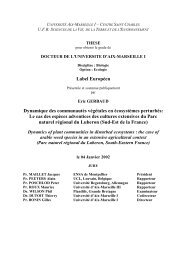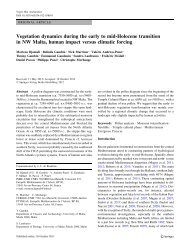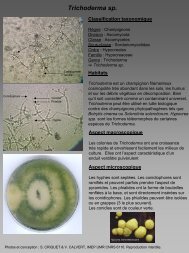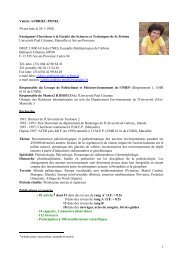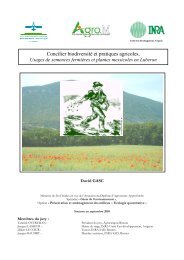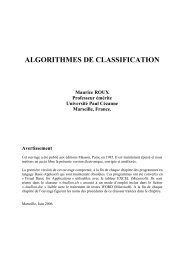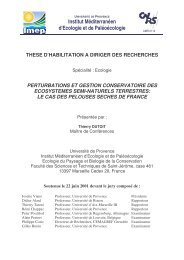UNIVERSITÉ PAUL CÉZANNE, AIX MARSEILLE III - IMEP
UNIVERSITÉ PAUL CÉZANNE, AIX MARSEILLE III - IMEP
UNIVERSITÉ PAUL CÉZANNE, AIX MARSEILLE III - IMEP
Create successful ePaper yourself
Turn your PDF publications into a flip-book with our unique Google optimized e-Paper software.
Résultats et discussion. Chapitre 3: Evaluation des facteurs de croissance<br />
ergosterol analysis as reported previously. At least three Erlenmeyers flasks per treatment<br />
were evaluated.<br />
Table 1. Mixing ratio of olive twigs and leaves (OTL), olive cake (OC) and olive mill<br />
wastewater (OMW) used as substrate for L.edodes growth.<br />
Treatment No Ingredient<br />
OTL (%) Olive cake (%) OMW (%)<br />
1 0 50 50<br />
2 20 30 50<br />
3 30 20 50<br />
4 50 0 50<br />
2.4. Experimental methodology<br />
2.4.1. Asymmetrical screening design<br />
For systems with a great number of variables different approaches of experimental<br />
factorial designs can be applied to achieve a screening of critical variables and to estimate<br />
their main effects on the responses. Inspiration was drawn from previous works (Baçaoui et<br />
al., 2001; Alinsafi et al., 2005; El Hajjouji et al., 2008). In this study, a 2 5 5 1 //16 experimental<br />
design was processed using Nemrodw software (Mathieu et al., 2000). It allowed the<br />
investigation of six factors (A-F) in sixteen experiments, five factors A-E each at two levels<br />
and one factor F at five levels. Tables 2 and 3 listed the values given to each factor; the choice<br />
was based on our preliminary experiments. Table 4 showed the 2 5 5 1 //16 experimental design.<br />
The results treatment was processed using Nemrodw software.<br />
From the 16 runs we can compute, using the least square method (Baçaoui et al., 2001;<br />
El Hajjouji et al., 2008), the ‘‘weight’’ of each factor level. For each factor, the weight of<br />
each level is related to the upper level weight, which becomes the ‘‘reference state’’ among<br />
each factor (Mathieu and Phan-Tan-Luu, 1997). The weight describes the factor effects on the<br />
response when changing factor levels with respect to the reference state. The obtained results<br />
are generally presented as histograms which graphically illustrate the variable differential<br />
weights (Lewis et al., 1999).<br />
94



